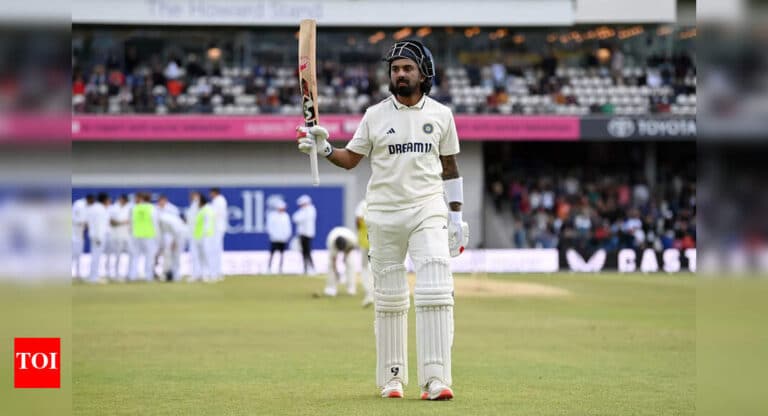
Shardul Thakur’s reckless batting in both innings hurt India.
| Photo Credit: AP
To realise how much of an anomaly the result in India’s opening Test against England in Leeds was, consider this — it was the first time in its cricketing history that India tasted defeat after batting first and scoring 350 or more in each innings.
There were costly dropped catches and there was also the inability of its bowling line-up — sans Jasprit Bumrah — to take wickets. But one of the biggest learnings from the contest for India is that batting big and batting long are prerequisites to beat this English side, especially on wickets that are far from the traditional ones we are used to in the Old Blighty.
In a way, it is a new reality for India. Both under Virat Kohli and Rohit Sharma, the zeal to take 20 wickets assumed priority over scoring a mountain of runs. At home, pitches became spicy, and batters did not always have the best conditions to showcase their skills.
Overseas, where the pacers got more purchase, India only augmented its batting resources slightly, with efficient, but not-so-spectacularly talented, all-rounders. In both scenarios, the presence of a world-class bowling attack meant India needed minimum runs to work with.
But in England this summer, the nature of the pitches and an undercooked Indian bowling roster has meant that there is pressure on the batters to deliver big and allow a freshly developing bowling attack more margin for error. Mohammed Shami is not available. Bumrah will play only two of the remaining four Tests and it’s anybody’s guess which will be those. The responsibility on the batters is thus immense.
India has certainly begun well, with four of the top-five scoring hundreds and there being five centuries in all. Yashasvi Jaiswal, K.L. Rahul and Rishabh Pant (twice) coming up with tone-setting knocks at the beginning of a long series is welcome news. Shubman Gill scoring a ton in his debut innings as captain was a big plus, something coach Gautam Gambhir described as “phenomenal.”
However, more runs from lower middle-order and tail will be welcome. The India No. 7 to 11 batters made just 45 runs both innings combined as against the 112 the Englishmen accounted for in the first essay alone. Out of the 20 wickets India lost, 11 batters were dismissed for single-digit scores. England had just three out of 15.
Does this mean that India should shore up its batting at the cost of wicket-taking bowlers in the second Test that begins in Edgbaston here from July 2? Maybe not. Perhaps the better thing to do is to ask for better decision-making from those selected. Gambhir denied that there was a lack of application in the opening Test, saying that “it’s not that they are not working hard” and that “even pure batters fail.”
But Shardul Thakur’s reckless batting in both innings — at the stroke of lunch on day two and with just over an hour left for close on day four — is evidence to the contrary. And by Gambhir’s own admission, he was picked for his all-round skills and not as a specialist bowler.
“We were always in the game from day one to day five,” Gambhir insisted after the Headingley reverse. “If the conditions remain the same, we will definitely be in play in the next Test.” But unless India seizes the moment, it will not amount to much.
Published – June 27, 2025 07:13 pm IST




